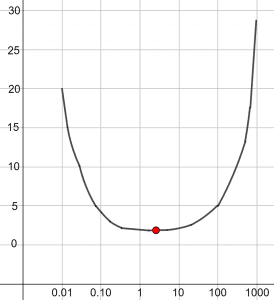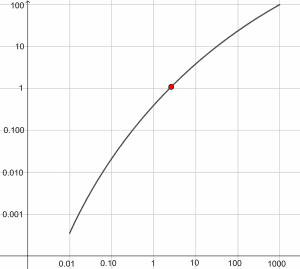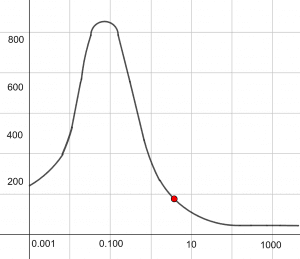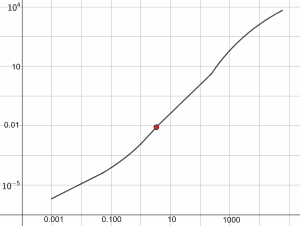JUMP TO TOPIC
Power Calculator Physics + Online Solver With Free Steps
A Power Calculator in Physics is used to determine the power of an object. Power is the work done by the object over a unit of time. Energy is provided to a body due to which it performs any action.
Calculating power manually is possible but quite a difficult task. The online calculator reduces the burden of memorizing formulas and performing long calculations.
The user simply inputs the energy and name of the particle and the resistance faced by it. The rest of the task is performed by the calculator itself and detailed results are displayed on the output window.

What Is Power Calculator in Physics?
A Particle-stopping Power Calculator is an online calculator that is used to calculate the power required to halt the motion of a specific particle. The particle may be traveling in any medium be it air, water, or vacuum the power calculator determines all of its properties.
The Power Calculator works in your browser and uses the internet to perform all the power calculations. It saves you from performing lengthy calculations and memorizing confusing formulas.
You simply have to add the opposing force, the particle, and the energy of that particle into the calculator. The output provides the power as well as other properties of the material. The calculator also provides a graphical representation of the relation between power and energy. More details about the solution can also be achieved through this calculator so that a complete understanding is developed.
How to Use a Power Calculator
The Power Calculator can be handy in solving complex problems of physics. You need to enter the specifications of the particle in motion and the medium in which it is traveling. On pressing submit, the output screen appears with the detailed results and graphs as required.
The following steps need to be adopted to calculate stopping power in physics.
Step 1:
Determine the problem that you need to solve and enter the specifications in the given boxes.
Step 2:
In the box titled Stopping Power, enter the medium that provides restrictive force to the particle in motion.
Step 3:
In the space given against the title Energy, input the energy of the particle traveling in that medium.
Step 4:
Input the type of particle under the heading called Particle.
Step 5:
Press Submit to view the results.
Step 6:
The output tab opens to display the result and a detailed solution to the entered problem. The first heading displays the Input Interpretation. This heading provides all the input specifications in a tabular form.
Step 7:
Under the title of Result, the value of the power is given in decimal form and units of MeV.
Step 8:
The next heading shows a graph with the title Stopping Power vs Energy. The graph shows the relationship between the stopping power and the kinetic energy.
Step 9:
The output screen also displays the properties of the stopping medium. The following properties are given:
Shielding thickness:
The Shielding Thickness refers to the thickness of the medium in which the particle is traveling.
CSDA range:
CSDA stands for Continuous Slowing Down Approximate Range. It is the average distance traveled by the particle while it slows down and eventually comes to rest.
Step 10:
Another graph shows the relation between the CSDA range and energy.
Step 11:
The output window also displays the Absorber Material Properties. Various properties of the absorber material are displayed in tabular form. The following properties are given:
- Nuclear collision length
- Nuclear interaction length
- Radiation length
- Minimum ionization
- Density
- Element mass fractions
- Mean excitation energy
Step 12:
The output also displays the power in different units.
Step 13:
You can calculate the power of various other particles using the power calculator.
How Does a Power Calculator in Physics Work?
A Power Calculator in Physics works by taking the type and energy of the particle and the stopping power as input; on submitting the entries, a detailed solution aside from the value of the power is received.
This calculator reduces human effort and provides every little detail that could be helpful for the user. While performing this task manually, you have to remember complex formulas and apply them to the available information. This may provide the answer after a tedious process but the calculator provides a lot of little details and explanations that make it even more beneficial.
Solved Examples:
Example 1
What is the stopping power of air if an electron passes through it with an energy of 2.3 MeV?
Solution
The stopping power of the air if an electron of 2.3 MeV of energy passes through it can be calculated as follows:
Input interpretation
| Stopping Power | |
| Incident particles | e– (electron) |
| Kinetic energy | 2.30 MeV |
| Radiation absorber | Air |
Result
1.73 MeV/(g/cm2)
Stopping power vs energy

Figure 1
Properties
| Shielding thickness | 9.87m |
| CSDA range | 1.26 g/cm2 |
Range vs energy

Figure 2
Absorber material properties
| (Z/A) | 0.4995 | ||||||||||||||||
| Nuclear collision length | 61.3 g/cm2 | ||||||||||||||||
| Nuclear interaction length | 90.1 g/cm2 | ||||||||||||||||
| Radiation length | 36.62 g/cm2 | ||||||||||||||||
| Minimum ionization | 1.815 MeV/(g/cm2) | ||||||||||||||||
| density | 1.275 g/L | ||||||||||||||||
| Element mass fractions |
| ||||||||||||||||
| Mean excitation energy | 85.7 eV |
Unit conversions
173 eV/(g/m2) (electron-volt per gram per meter square)
0.173 MeV/(kg/m2) (mega electron-volt per kilogram per meter square)
Example 2
Solve:
Stopping power: water
Energy: 1.9 MeV
Particle: proton
Find the stopping power of the water using the power calculator.
Solution
The stopping power of the water using the power calculator can be determined in the following ways:
Input interpretation
| Stopping Power | |
| Incident particles | p (proton) |
| Kinetic energy | 1.90 MeV |
| Radiation absorber | Water |
Result
165 MeV/(g/cm2)
Stopping power vs energy

Figure 3
Properties
| Shielding thickness | 69.6 µm |
| CSDA range | 0.00694 g/cm2 |
Range vs energy

Figure 4
Absorber material properties
| (Z/A) | 0.5551 | ||||
| Nuclear collision length | 58.5 g/cm2 | ||||
| Nuclear interaction length | 83.3 g/cm2 | ||||
| Radiation length | 36.08 g/cm2 | ||||
| Minimum ionization | 1.992 MeV/(g/cm2) | ||||
| density | 0.997048 g/cm3 | ||||
| Element mass fractions |
| ||||
| Mean excitation energy | 75 eV |
Unit conversions
The unit conversion is shown below:
16.5 MeV/(kg/m2) (Megaelectronvolts per kilogram per square meter)
0.165 MeV/(mg/cm2) (Mega electron-volts per milligram per square centimeter)
